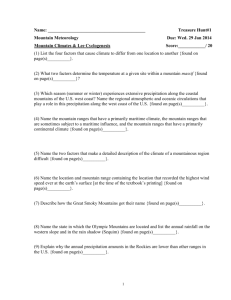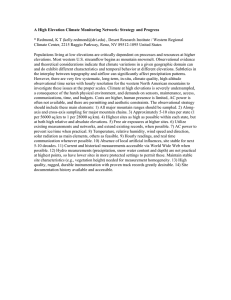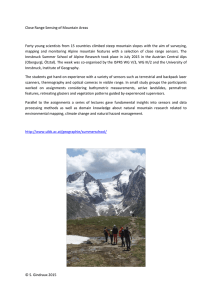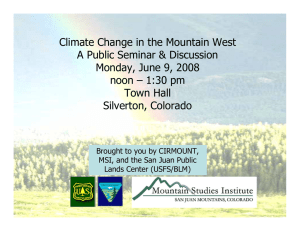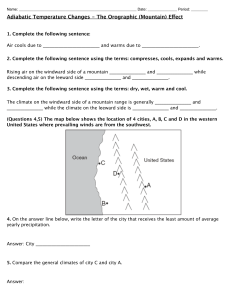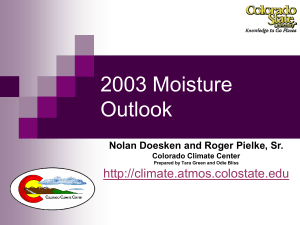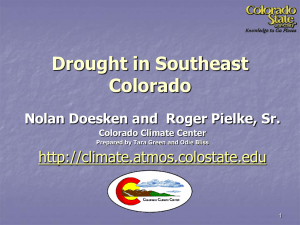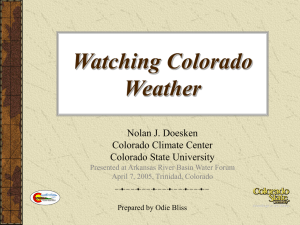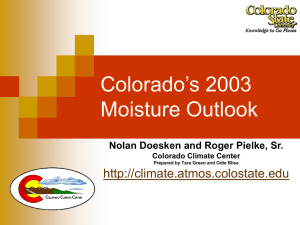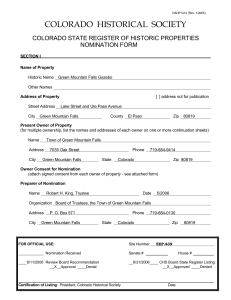LONG-TERM CLIMATE MONITORING NETWORK at the MOUNTAIN RESEARCH STATION,
advertisement
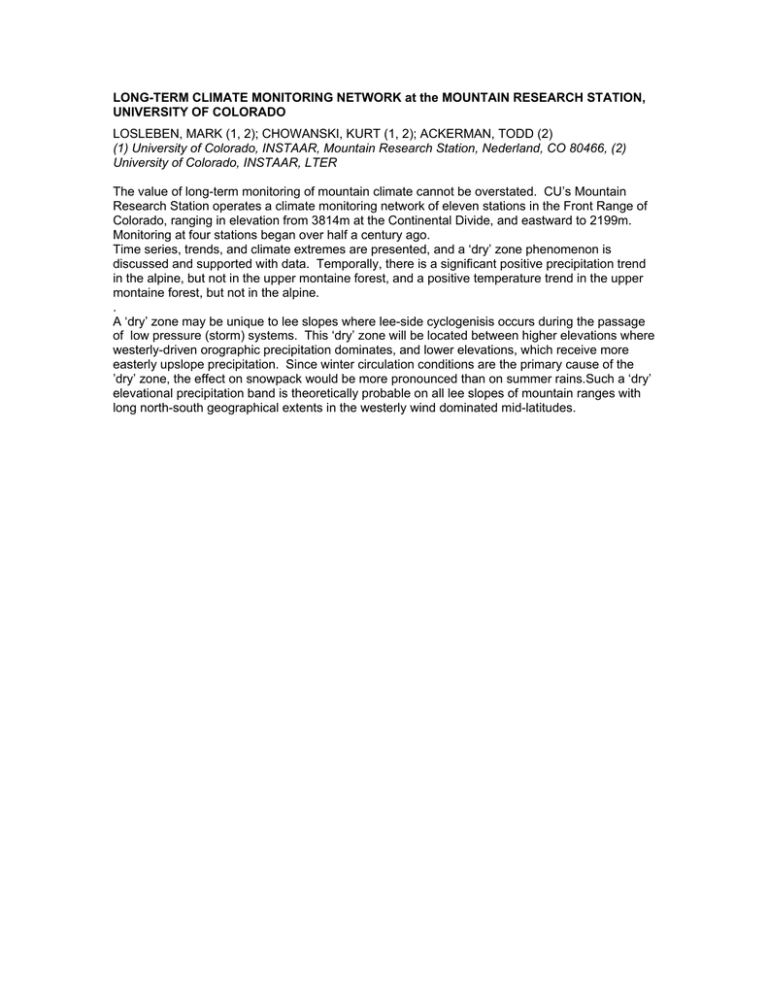
LONG-TERM CLIMATE MONITORING NETWORK at the MOUNTAIN RESEARCH STATION, UNIVERSITY OF COLORADO LOSLEBEN, MARK (1, 2); CHOWANSKI, KURT (1, 2); ACKERMAN, TODD (2) (1) University of Colorado, INSTAAR, Mountain Research Station, Nederland, CO 80466, (2) University of Colorado, INSTAAR, LTER The value of long-term monitoring of mountain climate cannot be overstated. CU’s Mountain Research Station operates a climate monitoring network of eleven stations in the Front Range of Colorado, ranging in elevation from 3814m at the Continental Divide, and eastward to 2199m. Monitoring at four stations began over half a century ago. Time series, trends, and climate extremes are presented, and a ‘dry’ zone phenomenon is discussed and supported with data. Temporally, there is a significant positive precipitation trend in the alpine, but not in the upper montaine forest, and a positive temperature trend in the upper montaine forest, but not in the alpine. . A ‘dry’ zone may be unique to lee slopes where lee-side cyclogenisis occurs during the passage of low pressure (storm) systems. This ‘dry’ zone will be located between higher elevations where westerly-driven orographic precipitation dominates, and lower elevations, which receive more easterly upslope precipitation. Since winter circulation conditions are the primary cause of the ’dry’ zone, the effect on snowpack would be more pronounced than on summer rains.Such a ‘dry’ elevational precipitation band is theoretically probable on all lee slopes of mountain ranges with long north-south geographical extents in the westerly wind dominated mid-latitudes.
